Our planet is home to a plethora of lifeforms, from the beautiful and elegant to the bizarre and downright dangerous. In 2011, scientists estimated that there are about 8.7 million different species on Earth, with 6.5 million of these being land-dwellers, and the other 2.2 million residing in our oceans. What’s most surprising about this is that a vast number of the Earth’s species have yet to be discovered.
Delving further into the statistics, scientists tell us that around 10,000 species of animals are discovered per year. While some of the creatures we share the planet with are cute and adorable, a good portion of them are pretty scary too. So, without further ado, let’s get up close and personal with some of our planet’s most dangerous and terrifying creatures.
The Giant Pacific Octopus
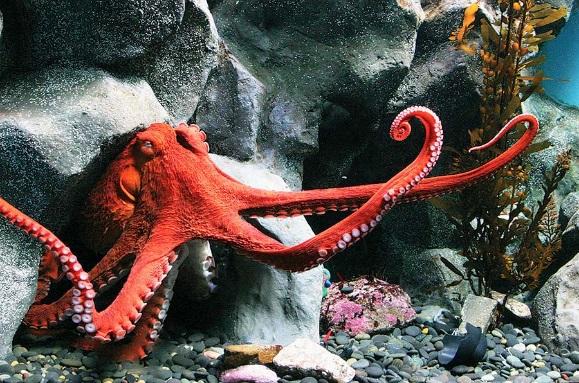
The giant Pacific octopus, also known as the North Pacific giant octopus, is one of the biggest octopuses on the planet. Apart from its impressive size, the giant Pacific octopus also lives longer than any other octopus species, with an average lifespan of about three to five years.
These octopuses have large, bulbous heads and are commonly reddish-brown in appearance. They have two rows of suckers which are lined with hooks, allowing them to capture their prey. Once in the inescapable grip of one of these creatures, prey will be helplessly dragged towards the sharp, beak-like mouth. giant Pacific octopuses feeds mostly on shrimp, lobsters, and fish, but have also been known to hunt sharks and birds.
The Cone Snail
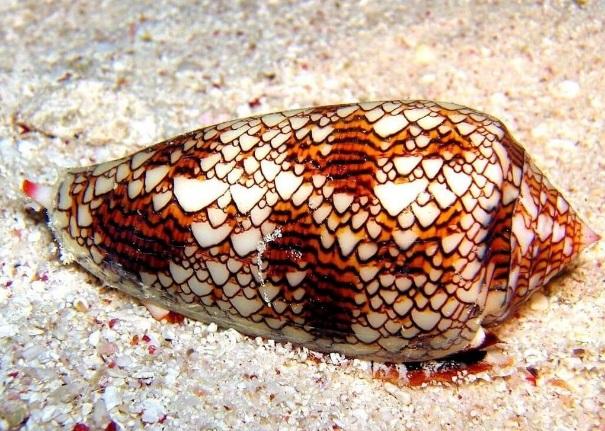
Looks can sometimes be deceiving and this certainly rings true when it comes to the cone snail. Ensconced in such a beautifully patterned shell, this little creature looks completely harmless. Indeed, it often attracts the attention of beach goers, especially those who are fond of collecting seashells.
A word of warning though: this snail has a very sharp tooth that propels from its proboscis, shooting out from the pointy end of the shell and injecting a venom so powerful it can cause serious damage and even paralysis to the human body. The scariest part? The venom has analgesic properties, so chances are, you won’t even feel it once you’ve been stung.
The Saw-Scaled Viper
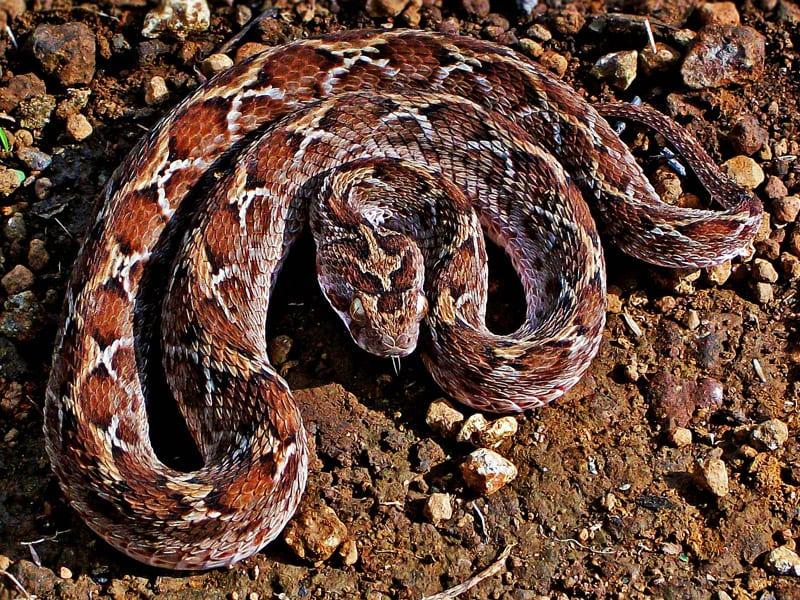
While people generally know to steer clear of snakes because of their venom, one particular serpent you should be even more wary of is the saw-scaled viper. These vipers kill more people compared to any other species of snake each year, despite the fact that they only grow to between one and three feet long.
The viper’s venom is deadly, causing the membranes in the blood vessels to break down, affecting the body’s clotting ability and ultimately leading to hemorrhaging. While some people are lucky enough to survive the bite, they often end up losing fingers, toes, or even limbs due to the damage the venom causes to the tissues surrounding the bite.
Africanized Bees

They say we shouldn’t tamper with Mother Nature and it sounds like good advice, especially after the development of the Africanized bee. These bees, also known as Killer Bees, were engineered by humans from a crossbreed of various European honeybees and the East African honeybee.
They were first introduced in 1956, in the hopes of increasing honey production in Brazil. Unfortunately, 26 swarms escaped a year later, spreading to North and South America. Africanized bees are deadly because they are more aggressive than other species and are also quicker to react to disturbances.
Mosquitos
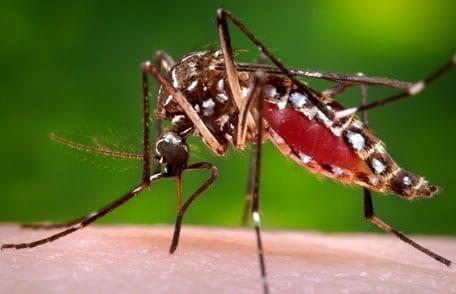
The buzzing of mosquitoes is enough to annoy anyone, but apart from being an irritating insect, they are also very dangerous. Mosquitoes may be tiny, but they are also carriers of various diseases that kill millions of people all over the world every year.
Dengue Fever is one of the fastest spreading diseases caused by mosquitos, with 2.5 billion people at risk for infection each year and over 100 countries affected worldwide. Apart from dengue, mosquitoes are also carriers of malaria, yellow fever, Zika virus, encephalitis, and Chikunguya.
The Black Mamba Snake
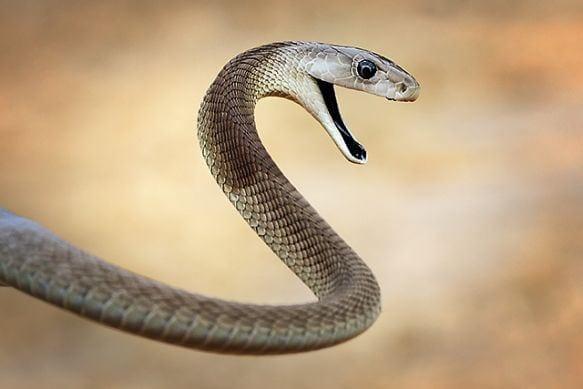
Black mambas are among the deadliest snakes in the world. They are usually found in the rocky parts and savannas of eastern and southern Africa and are recognized as Africa’s longest poisonous snake. Not only are the among the most deadly, black mambas are also the fastest snakes in the world, with the ability to slither at a speed of 12.5 miles per hour.
Black mambas get their name from the color of the inside of their mouth, which is blue-black. They tend to display this terrifying inky mouth abyss whenever they feel threatened. While these snakes are typically shy, they can easily become aggressive at any sign of danger. Black mambas will strike their victims repeatedly and the venom can kill within 20 minutes of injection.
The Tsetse Fly
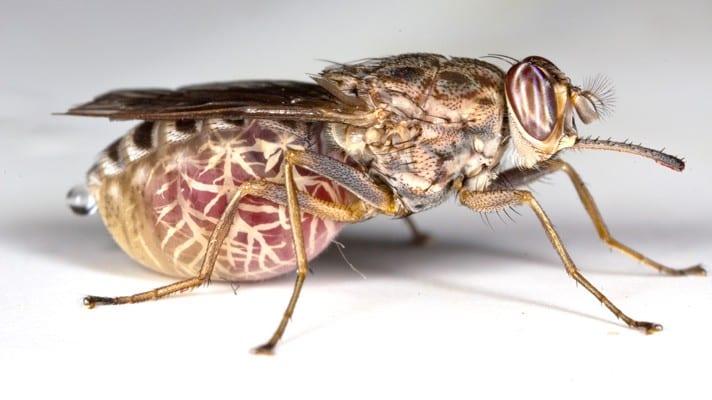
Tsetse flies are large, biting flies that can be found in the tropical parts of Africa. Considered as holoparasites, these flies feed on the blood of animals. While its bite is not particularly painful, it plays a major role in transmitting disease, including parasites, in both humans and animals.
The Tsetse fly spreads a parasite that can cause African trypanosomiasis or sleeping sickness, which starts out with painful joints, fever, itching, and headaches. Over time, it causes neurological symptoms such as disruption of sleep cycle, tremors, and muscle weakness, as well as psychological indications like psychosis and aggressive behavior.
Stonefish
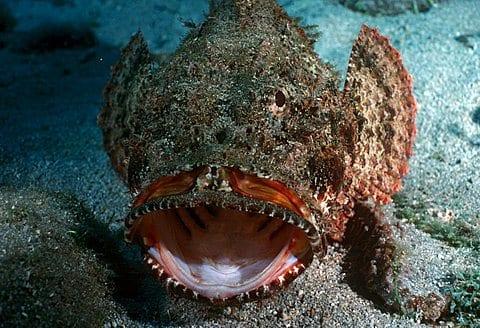
Stonefish are considered to be the most poisonous fish in the world. They are usually found in Indo-Pacific’s coastal regions. As the name suggests, stonefish look like rocks, allowing them to camouflage themselves for both protection and hunting prey. Unlike other sea creatures, they do not actively hunt their victims. Instead, they wait for their food to come to them.
When stepped on, a stonefish’s dorsal fin spines will release a toxin that can kill an adult in under an hour. The stonefish usually uses this venom not to catch its prey, rather, as a defense mechanism from other predators in the waters. It uses its powerful jaws and big mouth to suck down its prey, enabling the stonefish to swallow other creatures whole.
Saltwater Crocodiles
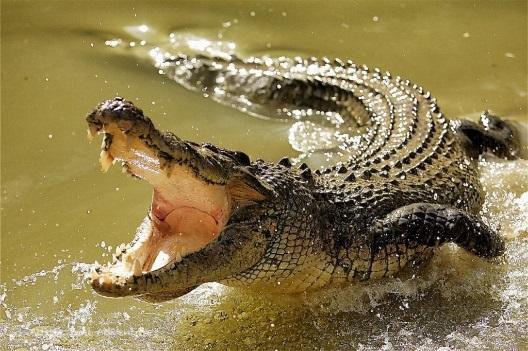
You might be under the impression that sharks are more dangerous than crocodiles, but the opposite is true. The saltwater crocodile is the largest living crocodilian on Earth. The average male grows up to 1,000 pounds and 17 feet long, but some can grow as large as 2,200 pounds and 23 feet long.
Saltwater crocodiles are common in Southeast Asia, eastern India, and northern Australia. Their swimming skills are advanced, allowing them to travel out to sea. They use their tails to ambush and drag their prey underwater, holding and rolling until the hapless creature drowns and can be swallowed whole or stored in the reptile’s den for later snacking.
Tarantula Hawks
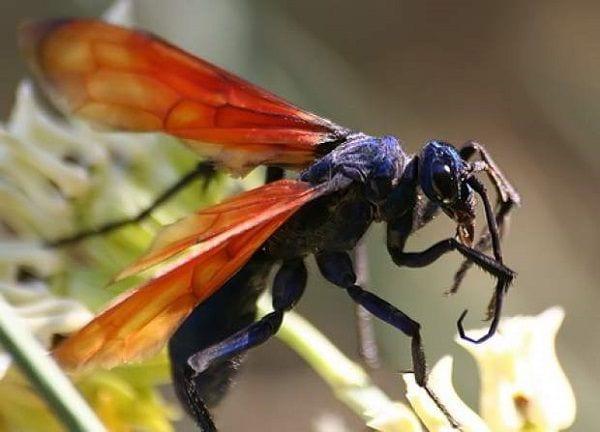
While the name implies that our next dangerous creature is a kind of bird, the tarantula hawk is actually a kind of wasp that feeds on tarantulas. These wasps have one of the most painful stings in the insect world and while they prefer to hunt tarantulas, they won’t think twice about stinging humans if provoked.
Tarantula hawks paralyze their prey with that infamous sting before dragging it to a nest to be used as living food. The wasp lays a single egg on its prey which then hatches a larva that eats the prey. For humans, there is no need to seek medical treatment when stung as the pain, while excruciatingly intense, will go away within five minutes.
Hippos
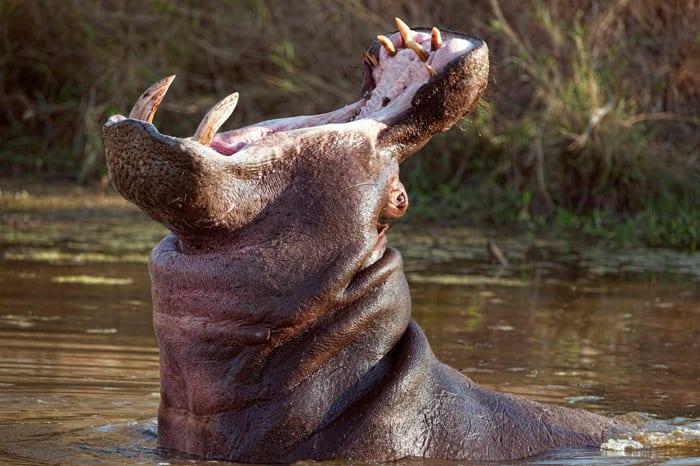
Hippopotamuses, once known as river horses by the Greeks, love spending their days in the water. They can spend up to 16 hours cooling off in the lakes and rivers of Africa. They also have the ability to breathe underwater for up to five minutes.
While they look too plump and cuddly to be the least bit dangerous, they are surprisingly fast runners with the ability to move at up to 19 miles per hour. Hippopotamuses are mainly herbivores, but they do tend to get territorial and aggressive toward possible threats.
The Portuguese Man-of-War
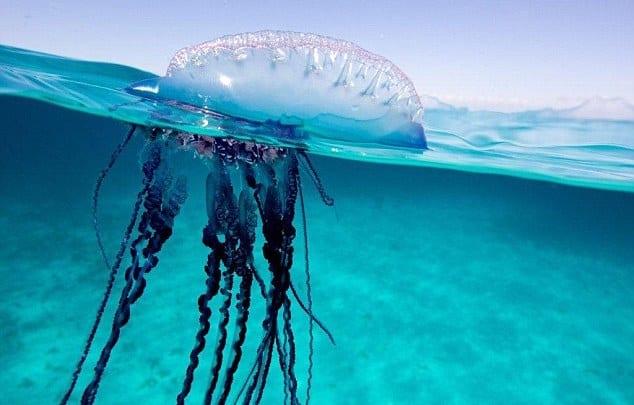
The Portuguese man-of-war is a relative of the jellyfish, though it looks more like a deflated balloon. It is mainly present in the Atlantic Ocean, living on the water’s surface and moving wherever the waves carry it rather than bothering to propel itself. Surprisingly, the Portuguese man-of-war (also known as a blue bottle) is not a single animal. Rather, it is made up of a colony of small hydroid creatures.
Man-of-wars have polyps, structures that serve several functions including feeding, reproduction, and protection. Its tentacles can reach up to 50 meters long and are equipped to inject a paralyzing poison into its prey. The venom can cause fever and shock in humans, but pouring saltwater over the sting site is said to help relieve it.
Cape Buffalo

The Cape buffalo is the largest among the wild bovids of Africa. Also known as the African buffalo, it isn’t very tall, only reaching between 51 to 59 inches in height. However, it makes up for this in girth, with each beast weighing as much as 870 kg. Cape buffalos are considered dangerous because of their erratic behavior.
These creatures attack about 200 people each year, and they are known for being excellent hunters. Cape buffalos live in herds and are recognizable due to their distinct horns. They are very protective of herd members and will attack lions and other predators when provoked.
Polar Bears
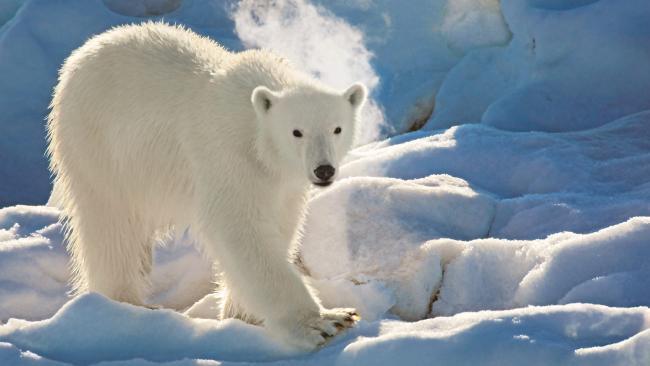
Polar bears are often depicted as cute and cuddly creatures, but this couldn’t be farther from the truth. While they look perfect for hugging, polar bears are among the most voraciously carnivorous species in the bear family. Not to mention that they are also very large, weighing up to 1750 pounds.
Polar bears are commonly found on the ice sheets of the Arctic, using their large, slightly webbed paws to swim in the coastal waters. The bears usually prey on seals but will also feed on the carcasses of dead whales if the opportunity arises. They are powerful predators and aren’t afraid of humans.
The King Cobra
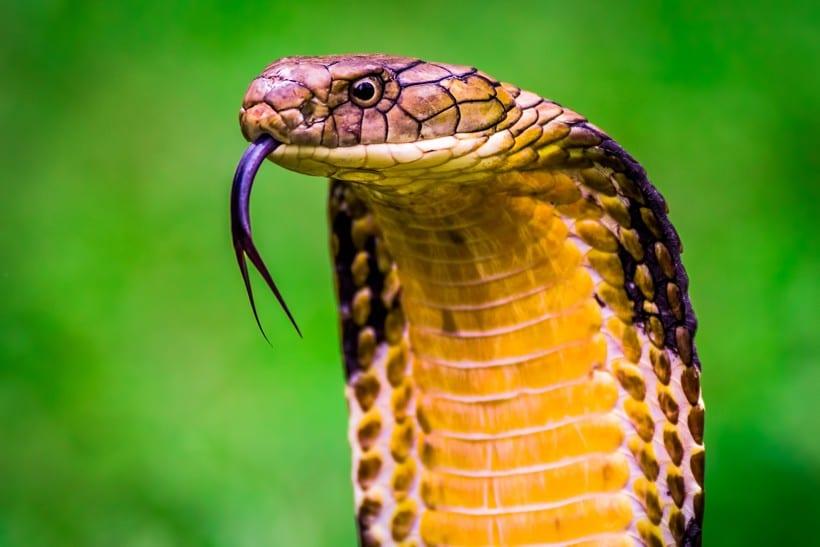
The King Cobra needs no introduction: its reputation for being one of the most venomous snakes on the planet is well known. This menacing snake, which can “stand up” and look you right in the eye, is found in India and some parts of Southeast Asia.
It can grow up to 18 feet long and it can raise 1/3 of its body off the ground when threatened. The cobra’s distinct hood and terrifying hiss may be nerve-wracking enough, but the snake’s venom is where the true terror lies. This stuff affects its prey’s nervous system, causing pain, vertigo, paralysis, and death.
Pufferfish
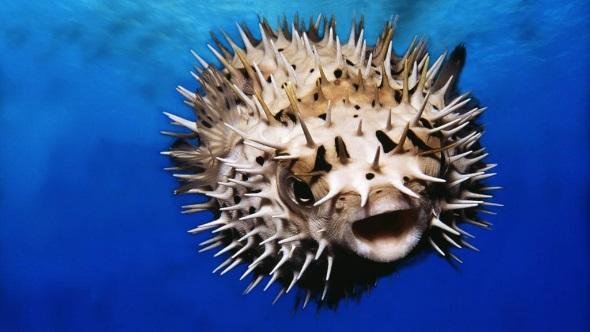
The pufferfish is a curious looking creature that is found in tropical waters all over the world. Also known as a blowfish, this aquatic species is able to turn itself into a ball several times bigger than its usual size, making them virtually inedible to predators.
Apart from their elastic stomachs, pufferfish also have a very toxic poison present in their skin which allows them to kill their prey. Its poison is more than a thousand times more toxic than cyanide, although some chefs in Japan cook it, with patrons considering it a delicacy.
Box Jellyfish
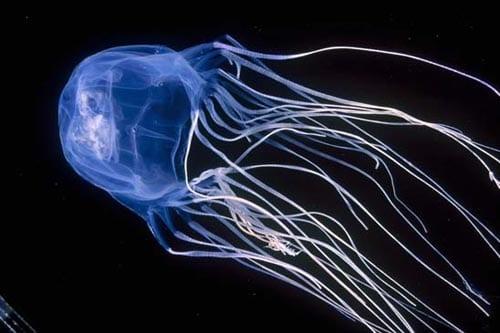
The box jellyfish is one of the most dangerous marine creatures in the world, thanks to its toxin which attacks the nervous system, heart, and cells of the skin. Its poison is so painful, that humans who get stung commonly die of heart failure or go into shock and drown before getting help.
Box jellyfish have the look of a pale-blue semi-transparent bell, making them difficult to spot in the water. Each corner of the bell grows up to 15 tentacles, which each grow up to 10 feet long. These tentacles all have 5,000 stinging cells present on their individual surfaces.
The Golden Poison Dart Frog
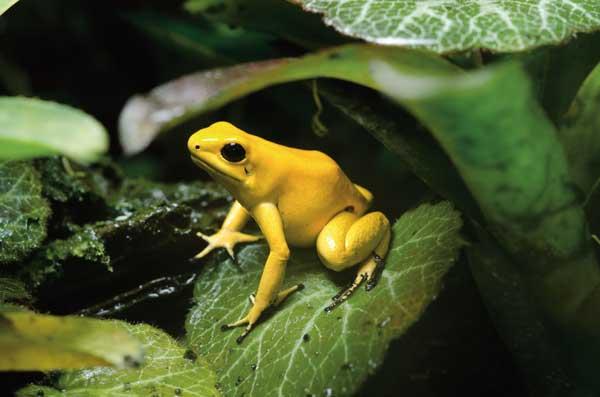
Not everything that glitters is gold. Take the golden poison dart frog for example. While its bright color and miniature size makes it look cute and innocent, it packs enough poison to kill ten adults and is, in fact, considered one of the most poisonous animals on the planet.
The golden poison frog grows to about an inch on average. They are typically found on the Pacific coast of Colombia. While scientists are unsure of how their poison is produced, one theory is that they adapt to plant poisons which are found in their prey.
Hyenas
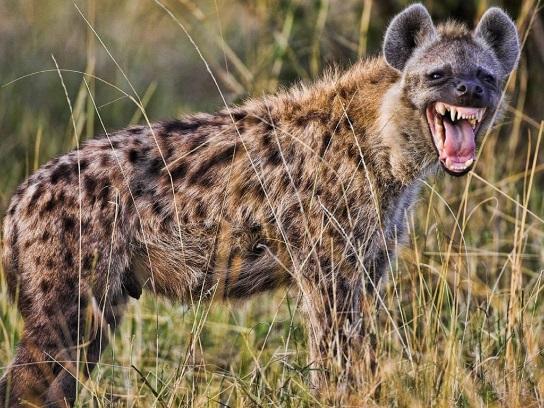
Thanks to the film, The Lion King, hyenas have gotten a bad reputation as being low on the list of intelligent animals. However, they are actually very smart. According to scientists, hyena are able to assess the number of attackers around their territory and will react aggressively if they know they outnumber their enemies.
Hyenas have shorter hind legs compared to their front legs, which gives them an advantage when it comes to endurance running. They also have a very strong bite which can crush bones easily. Where the film got things right is in the fact that hyenas tend to stick together, making them dangerous foes in the wild.
Bullet Ants
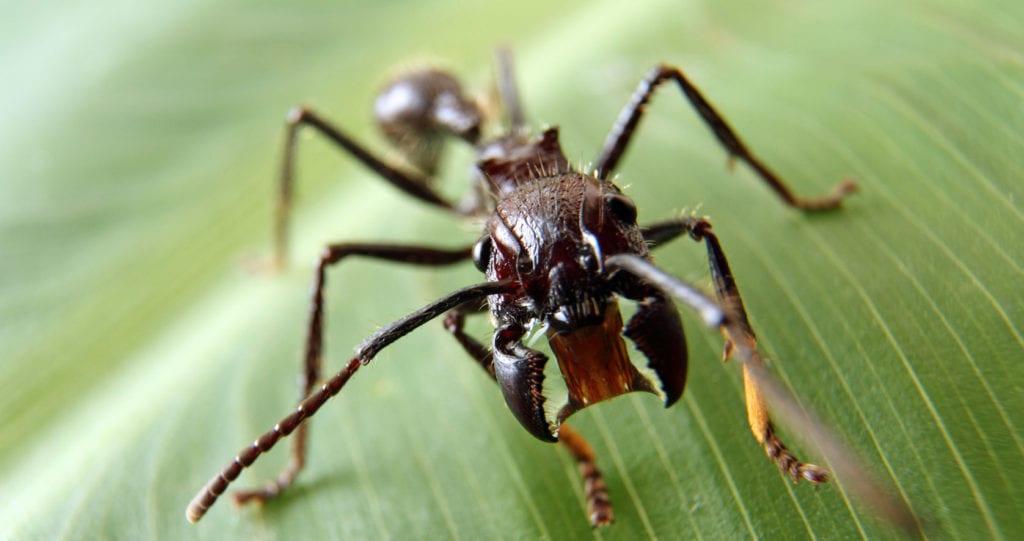
The bullet ant, commonly found in the rainforests of the Amazon, is known for having one of the most painful and lethal stings in the insect kingdom. Based on the Schmidt sting pain index, the sting of the bullet ant is even more painful than that of the tarantula hawk wasp.
Apart from the painful bite, the bullet ant’s sting also causes local shaking and temporary paralysis of the area. The pain lasts anywhere from five to 24 hours, with the agony coming in waves. While the effects of the venom stay only within the bitten area, the pain is so excruciating that it can incapacitate a fully grown man.
Nurse Sharks

The scientific name for the nurse shark, Ginglymostoma cirratum, is based on a combination of Latin and Greek words meaning “curled” and “hinged mouth,” describing the puckered appearance of the marine creature’s face. They are slow-moving and tend to stay at the bottom of the ocean, but their strong jaws are something to be wary of.
The nurse shark feeds at night, mainly on shellfish, shrimp, fish, and squid. It has thousands of small, serrated teeth and can grow up to 14 feet long. While generally harmless to humans, these sharks will attack and bite divers if they are stepped on or bothered.
Leopard Seals
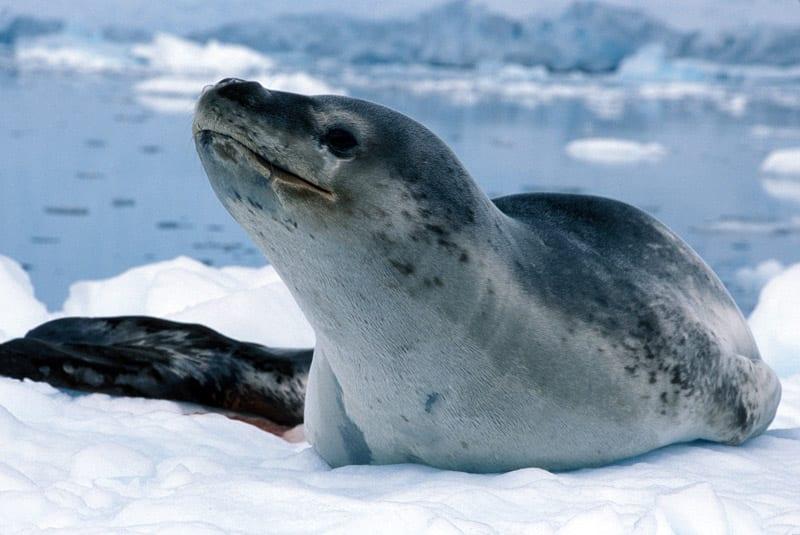
The leopard seal, named as such because of its black-spotted coat, is the second largest seal in the world. Its coat is similar to that of a leopard’s but instead of the golden color, the seal has a grayish coat. Leopard seals are vicious predators and feed on warm-blooded prey, including other seals.
Their front teeth are very sharp, and they use their strong jaws to kill fish, squid, smaller seals, and even penguins. While leopard seals are considered dangerous, attacks on humans are quite rare, with the last fatal attack in 2003, when a female biologist who was snorkeling was killed by a seal.
Sidewinder Snakes
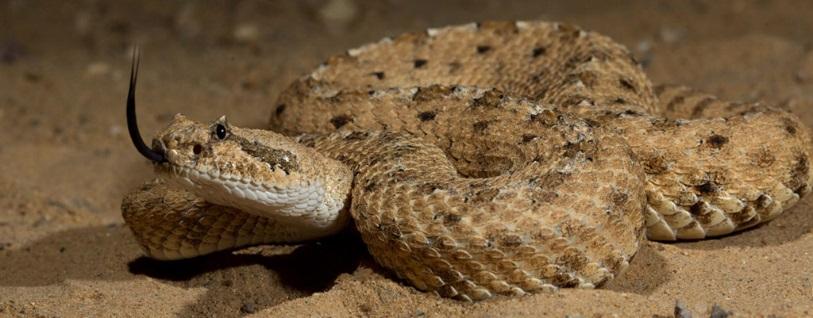
The sidewinder, also referred to as a horn viper, is known for its distinct way of crawling. As the name suggests, the sidewinder crawls in a characteristic j-shaped pattern. This rattlesnake lives in the deserts of Africa, North America, and the Middle East.
While sidewinders are venomous, their bites aren’t fatal to humans. Their glands are smaller compared to other snakes, decreasing the lethal effect of its venom on the body. Nevertheless, getting bitten by one should still be taken seriously and medical treatment must be sought.
Boomslang Snake

The boomslang is a large, poisonous tree snake, local to Sub-Saharan Africa. The average adult snake grows up to five feet, and it has characteristically huge eyes and a head shaped like an egg. The Boomslang has potent poison which it delivers to victims through fangs located at the back of its jaw.
The snake venom primarily contains a hemotoxin, causing the victim to bleed inside and out. It tends to act slowly, with the symptoms only appearing several hours after the bite. Fun fact for Harry Potter fans, boomslang skin is used as one of the ingredients in the Polyjuice potion.
Lynx
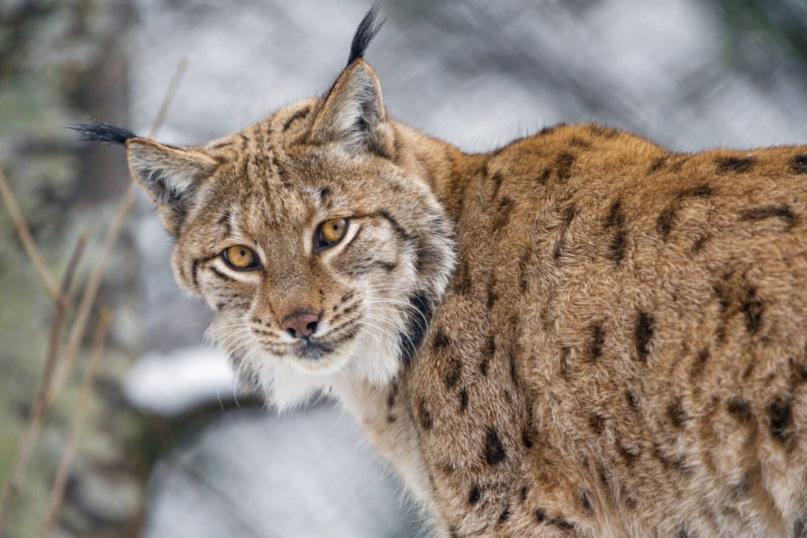
The lynx is a member of the cat family, commonly found in the forests of Asia, North America, and Europe. They tend to live alone, avoiding humans and only hunting at night. Lynx are skilled at hunting, with keen hearing and eyesight, enabling them to spot prey at a distance of 250 feet.
Lynx have beautiful thick fur that helps keep them warm and their paws are also covered with fur, acting as natural protection from the snow. In 2014, a woman in Atlanta was attacked by a lynx, although the woman said that it was her fault as she went close to it to feed it. Pro tip: Lynx can feed themselves so don’t put yourself on the menu by trying to help them out!
Raccoons
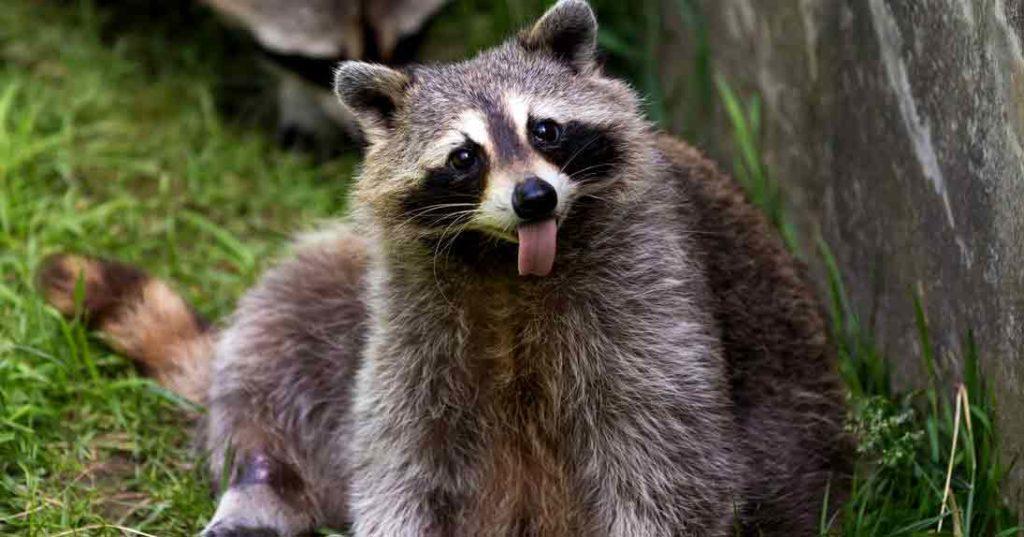
Bandit-masked raccoons (aka trash pandas) are one of the most recognizable little creatures of the US, not just because they are everywhere, but also because they are known to be pests. Apart from eating just about anything and boisterously scouring through garbage cans in the middle of the night, they also carry diseases and parasites that can be harmful to humans.
Raccoons are found just about anywhere, from prairies and marshes to forests, and even cities. The creatures of this species are native to America, can easily adapt to different environments, and can even hunt in complete darkness thanks to their nimble paws and long fingers.
Vultures
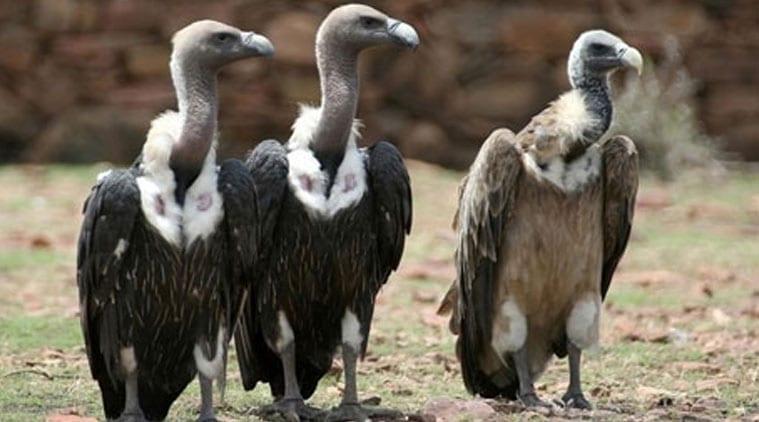
Vultures are considered scavengers. There are presently two types of this bird: New World vultures and the Old World vultures. They have a characteristic bald head and can commonly be seen feeding on the carcasses of dead animals.
While they are considered dangerous, vultures rarely bother with humans. They also play an important role in keeping the ecosystem in check, helping clean up the environment and preventing disease from spreading. At present, half of the vulture species are already at risk for extinction.
The Water Monitor Lizard
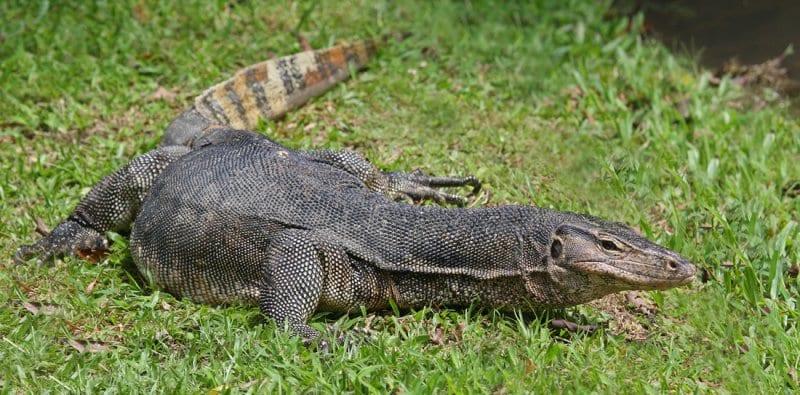
The water monitor lizard is a large lizard native to Asia. They are considered dangerous creatures mainly because of their strength. Apart from being physically powerful, they can also swim, climb, and sprint. These lizards have razor-sharp teeth, enabling them to tear chunks off their prey with ease.
It is also believed that the water monitor lizard has a form of venom in its saliva, meant as a defense mechanism and to help them catch and immobilize prey. Its skin is considered valuable, commonly exploited for bags, belts, and shoes. Because of the risk of extinction, many conservation efforts have been put in motion for the lizard throughout Asia.
Vampire Bats
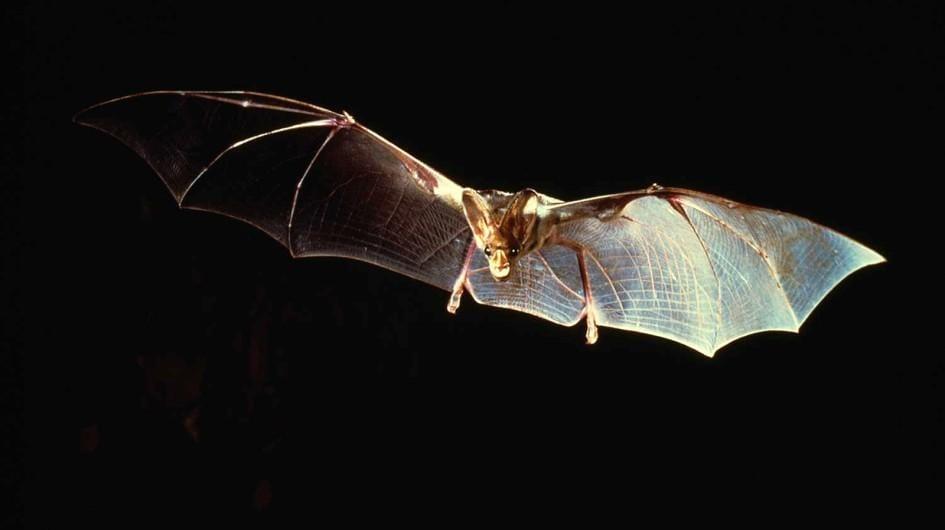
Just like the mythical creature after which these creatures were named, vampire bats drink the blood of other animals in order to survive. While they commonly drink blood from cows, horses, birds, and pigs, they are also known to occasionally bite humans too.
Vampire bats are found across South America and while attacks on humans are rare, these creatures are known to carry diseases, specifically rabies. Vampire bat saliva is, however, believed to have some use in medicine, particularly in helping increase blood flow in stroke patients.
Siafu Ant
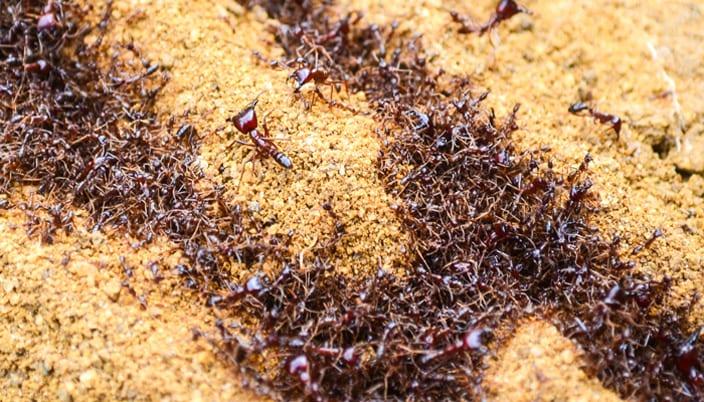
Siafu ants, also known as driver ants or dorylus, are army ants that are found in east and central Africa. Each colony has more than 20 million ants, with a separate soldier class comprised of ant workers with larger heads and mandibles (similar to pincers).
Siafu ants attack aggressively when they are threatened, and when they bite, they tend to hold on, even after their victim dies. These ants are sometimes used as a natural means of pest control, especially when it comes to farming communities who need to prevent insects and rats from destroying their crops.
The Inland Taipan Snake

The inland taipan snake is a small-scaled serpent with fatal, fast-acting venom. It is considered one of the deadliest snake species, with the most toxic venom compared to other reptiles when tested on a cell culture of the human heart.
The inland taipan’s venom is specifically targeted to take down warm-blooded animals, and one bite is said to be enough to kill 100 grown men. It moves extremely fast and strikes with a high degree of accuracy. If left untreated, a bite from this snake can lead to death in a matter of 30 to 45 minutes.
Assassin Bugs

The assassin bug is one creature who definitely deserves its name. Despite its diminutive stature, it kills about 12,000 people every year. The stealthy little bug has a distinct thin, neck-like structure which connects its slender head to the rest of its body. It has a beak with three segments which it uses to pierce its prey.
While the bite itself is not deadly, they carry a protozoan parasite which imparts the Chagas disease to its victims. Once the disease reaches the chronic stage, it can lead to heart symptoms, and can even cause heart failure due to the presence of the parasite in the organ’s muscle fibers.
African Lions

The lion is the king of the animals, and not without good reason. Lions are the only cats that live together in groups and the males are in charge of taking care of their territory. The African lion can weigh anywhere from 265 to 420 pounds, enabling them to easily overpower weaker animals when hunting.
Female lions are tend to be the primary hunters of the pride. Sharing of the kill is done via a pecking order, with the cubs eating last. While lions do not actively hunt people, there have been several recorded cases of African lions seeking out humans as prey.
Flower Urchins

While this pretty, pink flower-like creature looks harmless, don’t let its bubbly, innocent appearance deceive you. It is considered a highly dangerous species of sea urchin, responding with a very painful sting when touched. In fact, if you ever get stung by the flower urchin, you should seek medical attention as soon as possible.
The flower urchin features appendages that look like delicate petals at first glance. However, these serve as the creature’s defense from predators and parasites. It contains at least two different kinds of toxins which cause the red blood cells in the body to clump together and can lead to convulsions.
Clouded Leopards
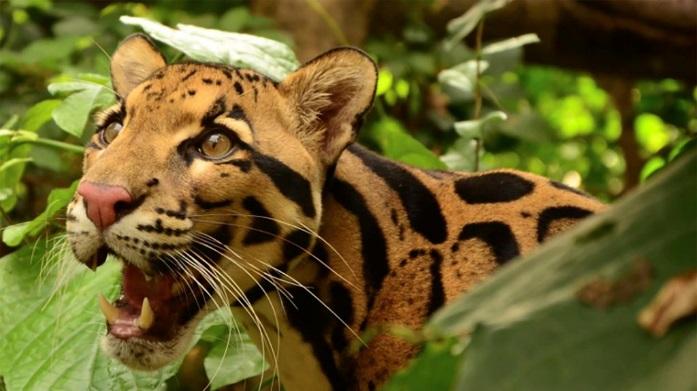
The clouded leopard is a beautiful cat found in China and Southern Asia. If you’re wondering why you’ve never seen nor heard on this species before, they are rarely seen in the wild and not much is known about their habits. While it is one of the smaller animals on the list, this leopard shouldn’t be taken lightly, given its amazing climbing abilities and strong grip.
The clouded leopard is able to hang upside down from large branches with the help of its sharp claws and big paws. They also have short and powerful legs with rear ankles that can rotate, allowing them to climb down from trees in a head-first position.
Piranhas
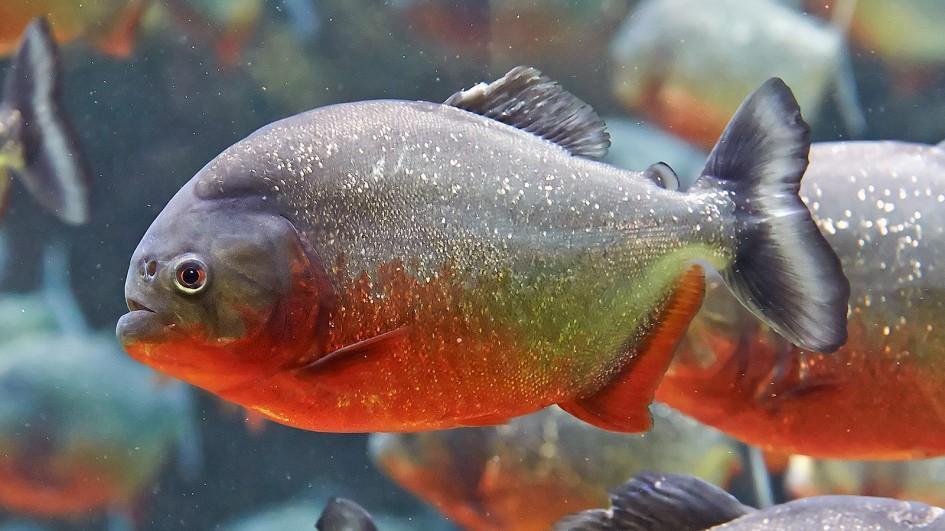
Piranhas are freshwater fish that inhabit the waters of South American lakes and rivers. Known for their razor-sharp teeth, strong jaws, and penchant for feeding frenzies, these fish are considered dangerous to both animals and humans. While most people are under the impression that all piranhas are carnivores, some are actually vegetarian.
Most piranhas only grow to about two feet long. The most common type of piranha, the red-bellied species, only grow to about 20 inches in length. Piranhas usually attack during the dry season, when water levels are low and food is scarce. Splashing in the water can cause the piranha to go nuts, and attacks on humans are mostly on the arms and legs.
Humboldt Squid
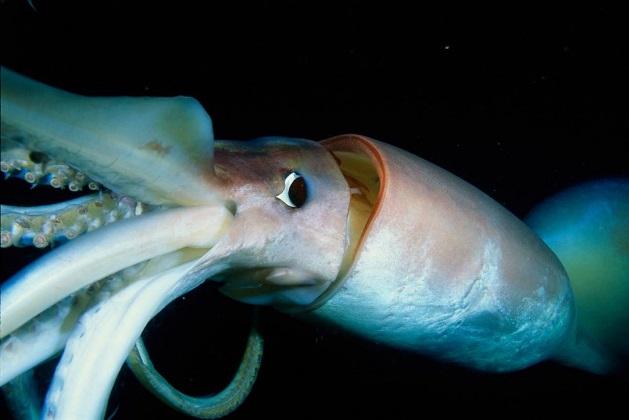
The Humboldt squid is the largest of the squid family. It is commonly found in the Pacific Ocean, usually in the deep waters of the Humboldt current. They are also known as giant squid due to their massive bulk, which can reach up to 50kg.
Their aggressive nature and ability to light themselves up in flashes of white and red (with the help of bioluminescence) has led to their other nickname: red devils. Studies suggest that the Humboldt squid tends to get more aggressive if disturbed while eating or if divers get too close with flashing lights.
Tarsiers

Tarsiers may look innocent and cute thanks to their huge eyes, but that doesn’t mean we can cuddle them to our heart’s content. These creatures are a cross between lemurs and monkeys, are nocturnal, and have a keen sense of smell. They are commonly found in the islands of Southeast Asia.
Tarsiers are the only pure carnivorous species among the primates. They eat snakes, lizards, and insects. Thanks to their very long hind limbs and disk-like paddings on their digits, tarsiers are able to launch themselves from one trunk of a tree to another, traveling through the jungle with ease.
Spectacled Caimans

The spectacled caiman is native to the tropical parts of Central and Southern America. Its name comes from the bony ridge present between its eyes, bearing a resemblance to the nosepiece of a pair of eyeglasses. Caimans are extremely adaptable, allowing them to survive in either fresh or saltwater.
While spectacled caimans are commonly found resting on shores or lolling about partly submerged in water, they can move very fast when threatened. They have very sharp teeth and hunt during the night, with their diets varying depending on the season. Because of their skin, caimans are often hunted by humans for commercial trade.
Gorillas

Gorillas are the largest primates in the world, with the males growing up to 400 pounds and the females reaching around 200 pounds. Gorillas are among the closest living relatives that humans have and are commonly found in the forests of central Africa. They are very strong and commonly live in family groups ranging anywhere from six to 30.
Gorillas are shy by nature and will only attack if they are approached or feel threatened. They consume mainly leaves, fruits, shoots, and stalks, and are more active during the daytime. Humans who approach gorillas should take care not to make any sudden movements which may cause the gorilla to charge aggressively.
Puffers
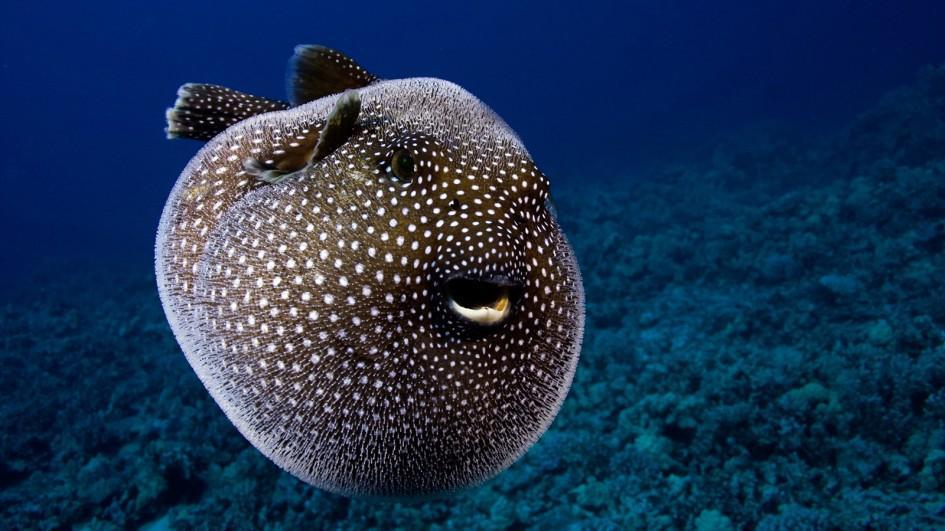
Puffers, or swellfish, have the ability to inflate themselves with water or air into a ball-like form when they feel threatened or attacked. They are commonly found in warmer regions, mainly living in the ocean, but also able to survive in freshwater. Some puffers grow to about three feet long, but the average ones are considerably smaller in length.
Puffers are highly poisonous and are considered to be the most toxic vertebrates in the world. Humans who don’t seek immediate medical attention after a puffer sting can die, as the toxin causes paralysis which can quickly lead to a cessation of breathing. Puffers are sometimes eaten as a delicacy, but care should be taken (by a qualified chef) to clean and prepare them meticulously.
Blue-Ringed Octopus

The blue-ringed octopus is a highly toxic species of octopus. They commonly live in coral reefs and tide pools in the Indian and Pacific oceans. They have a distinct yellow skin with black and blue rings that change color when the octopus feels threatened.
This octopus species is recognized as the most poisonous marine animal, with their venom containing a powerful neurotoxin that causes loss of sensation, paralysis, respiratory arrest, and heart failure. While the blue-ringed octopus is generally cute, small, and docile, it will attack if approached and provoked.
Gray Wolves
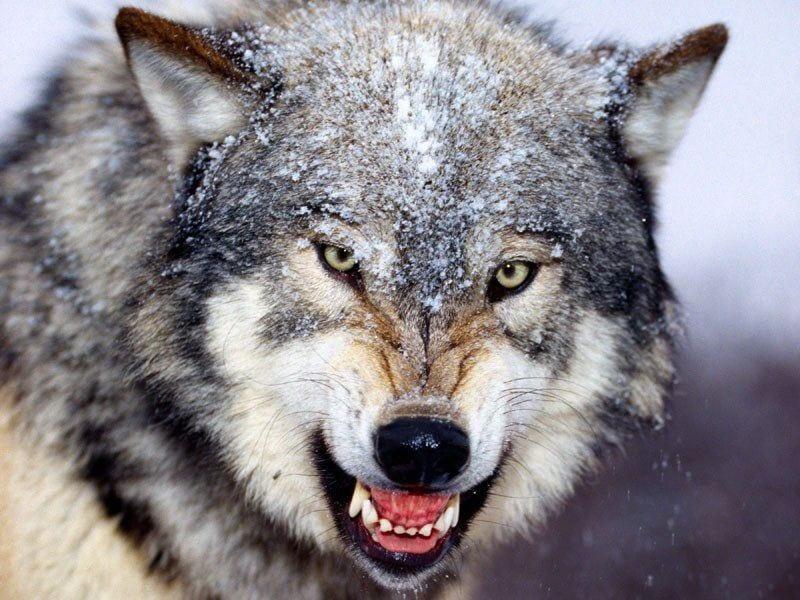
Well-developed senses, powerful jaws, and huge canine teeth – these are just some of the features that make the gray wolf an impressive, yet dangerous creature. Found commonly found in North America and Eurasia, these majestic animals are also known as timber wolves, and are the largest member of the wild dog family.
Gray wolves are very social animals, usually found travelling in a pack consisting of their mate and children. A hierarchy of dominance is set in the pack with the alpha male and alpha female taking charge of the group. Wolves have always been perceived as a threat, not only to livestock but to humans as well.
Freshwater Snails
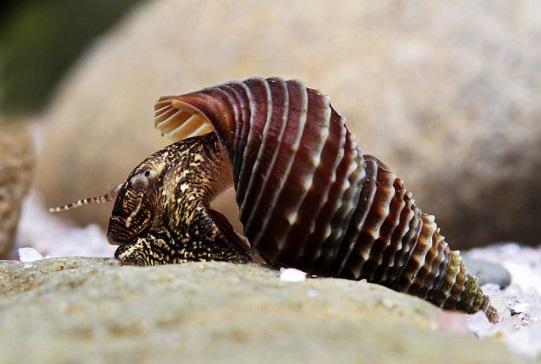
Freshwater snails are mollusks who live in a shell within which they can retract completely for protection. These snails are commonly found in lakes, springs, and rivers. While they seem harmless enough, freshwater snails are known carriers of different forms of human and animal parasites.
One of the most common diseases caused by freshwater snails is schistosomiasis, a parasitic infection which causes a variety of symptoms, depending on where the infection occurs. The disease may cause irreversible effects such as infertility and may also lead to death if left untreated.
Rhinoceros
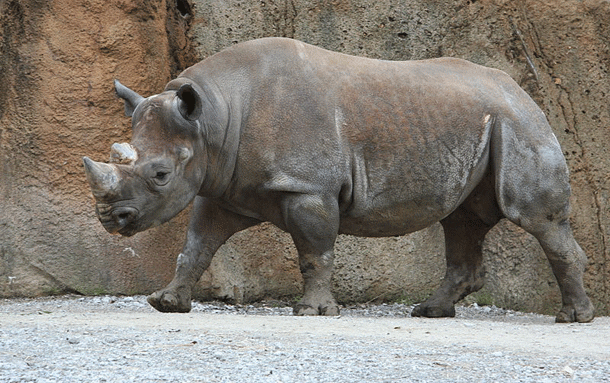
The rhinoceros, which literally means “nose horn,” is a large herbivorous creature which is instantly recognizable by its uniquely horned snout. They once roamed freely in Africa, Asia, and Europe, but now only exist in protected areas, mainly because they are being poached for their horns which are (erroneously) believed to have medicinal properties.
Rhinos have very poor eyesight, but a keen sense of smell and hearing. Despite the fact that they are herbivores, rhinos will not hesitate to attack using their horns to defend themselves from any perceived threat. Their thick skin also serves as handy protection, making them difficult for predators to take down.
The Yellow Anaconda
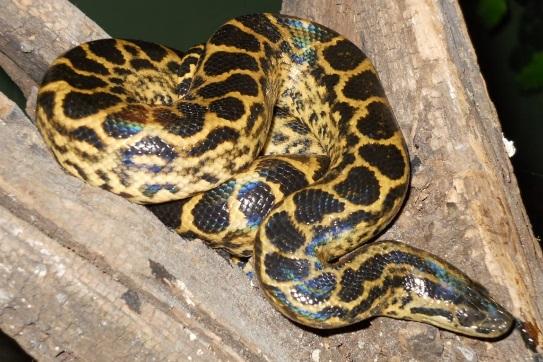
While the yellow anaconda isn’t as big as the green anaconda, it’s still among the largest snake species in the world. Female anacondas are heavier and longer than their male counterparts, reaching lengths of up to 4.6 meters (about 15 foot). Yellow anacondas usually thrive in the southern parts of South America.
This anaconda prefers an aquatic habitat, living in swamps and marshlands where it hunts for prey. Yellow anacondas aren’t venomous, but once one captures its victim, it will suffocate it by wrapping itself around the animal and consuming it whole.
Tapeworms
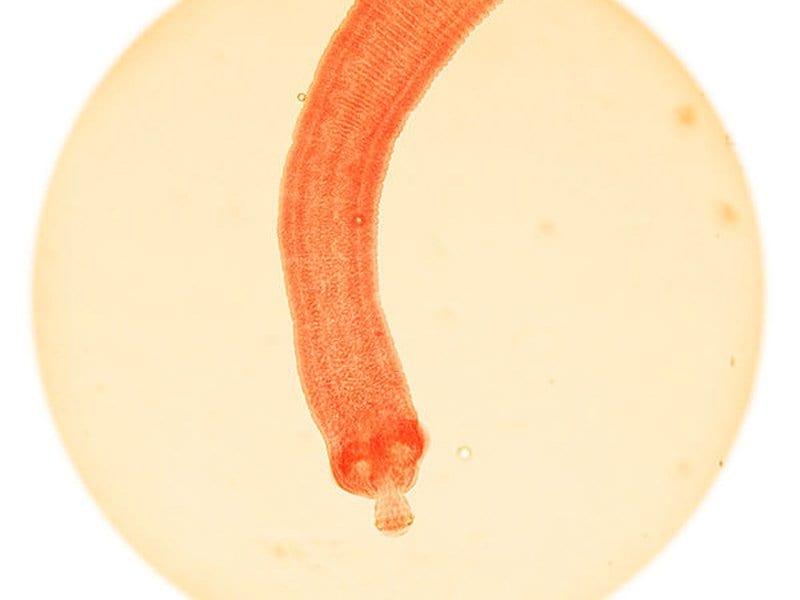
Tapeworms are flatworms that live in the digestive tract. Each tapeworm’s body is long and made up of segments which grow and extend as it gets more nutrients from the body. Humans can get infected by this parasite if they consume contaminated food or water.
One kind of tapeworm infection is also known as cysticercosis, wherein the larvae of the tapeworm enters the bloodstream and can travel to different parts of the body like the muscles and brain, forming cysts. Depending on where the cysts are located, they can cause seizures, problems with vision, and body weakness.
Humans

You might be surprised to find yourself included on this list, especially since we are physically weaker than most of the creatures mentioned, and come unequipped with venom and poisonous appendages. However, we humans are dangerous in our own unique way. This fanger resides in our ability to think, plan, reason, and act beyond the capacity of the creatures we share this planet with.
Humans are solely responsible for the invention of war and weapons, both of which have created chaos and led to the destruction of parts of our planet. We are the only animals to have ever started a world war against each other, claiming millions of lives in the process.
The Komodo Dragon
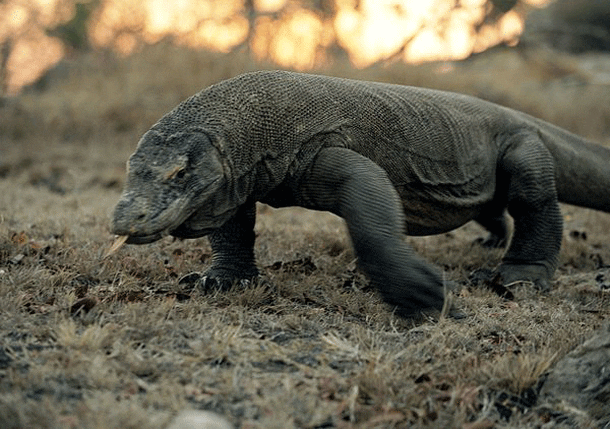
Komodo dragons have existed for millions of years in the Sunda Islands of Indonesia. They are considered the heaviest lizards on the planet, weighing more than 300 pounds each and reaching a length of about ten feet. They have big, muscular tails and will eat just about anything.
Komodo dragons are skilled hunters, preferring to camouflage themselves and lie in wait for their prey. They use their sharp claws and razor-like teeth to eviscerate their victims, waiting for prey to bleed out and go into shock before ripping into it. Komodo dragons also have venom glands, ensuring that their victims don’t escape once they have been bitten.
The Brazilian Wandering Spider
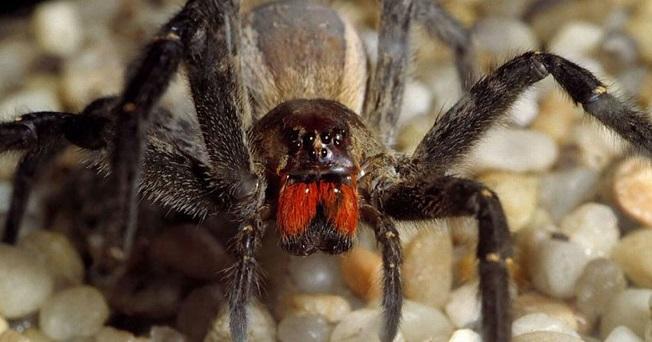
Brazilian wandering spiders, also known as banana spiders, belong to the genus Phoneutria, which translates to “murderess” in Greek. It is among the most poisonous spiders on the planet, and its bite is deadly to humans, especially children.
There are eight different species of the wandering spider, all of which are found in Brazil. These arachnids tend to wander the jungle in the middle of the night, preferring to actively hunt their prey instead of building webs and lying in wait. According to scientists, these spiders usually bite as an act of self-defense rather than as a form of aggression.
Rattlesnakes
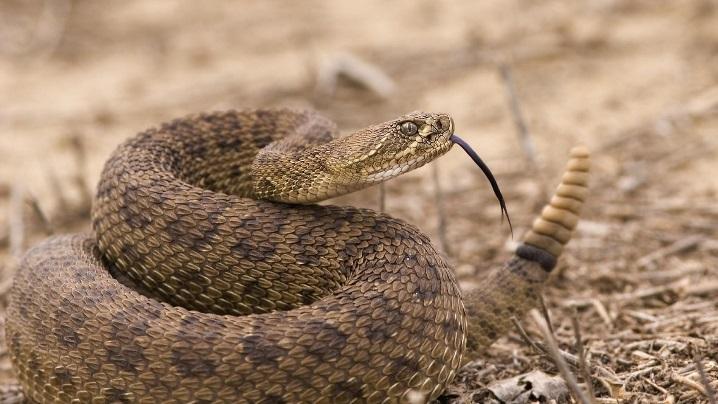
Rattlesnakes are found in the Western hemisphere, living in plains, mountains, and deserts. While there are 24 different species of rattlesnake, all of them have that distinct rattle found at the tip of their tail, producing the spine-tingling sound that never bodes well for anyone who hears it.
The rattle is meant to warn potential attackers to keep their distance, yet it also serves to distract prey long enough for an attack to be launched. Rattlesnakes have poor hearing, but they can sense movement through vibrations on the ground. Younger rattlesnakes are unable to control the amount of venom they release when they bite. This ability develops slowly as they grow into adults.
African Elephants
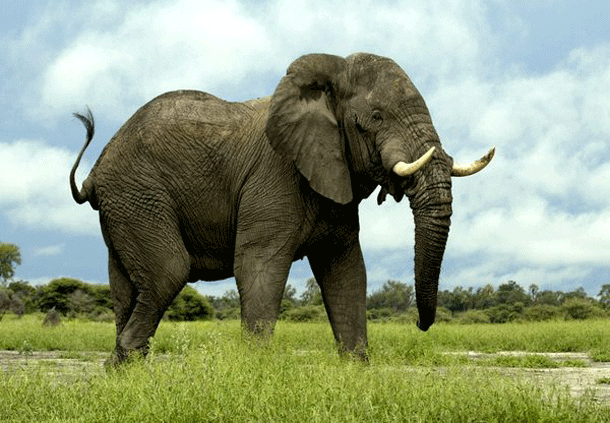
Known as the biggest land animal on Earth, the average African elephant grows anywhere from ten to 13 foot tall and can weigh between 10,000 to 13,000 pounds. African elephants use their tusks to dig the ground for food and also to battle one another.
These massive creatures are known to show sudden bursts of aggressiveness and are believed to have a vindictive attitude as well, stampeding through villages and running over animals and people in their rage. With populations dwindling due to illegal hunting, the elephant is considered an endangered species.
Black Eagles
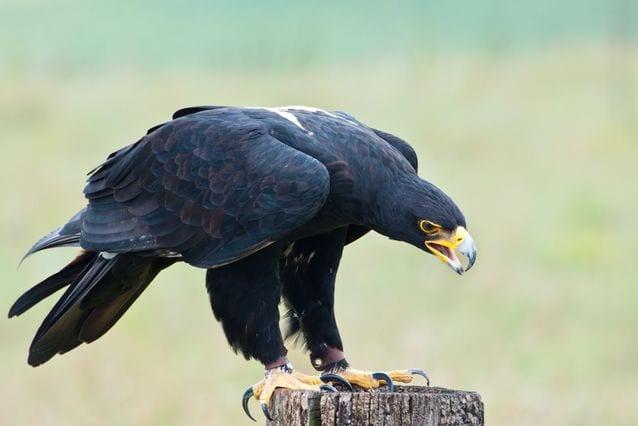
The black eagle is a preying bird, easily identifiable by its long, splayed fingers which are used to hunt and capture mammals, other birds, and eggs. They are usually found in Southeast Asia as well as in southeastern China. Black eagles have a yellow bill base and legs that contrast with their dark-colored feathers.
This majestic bird eats mammals such as squirrels and bats, as well as small birds. Black eagles are known for taking slow flights and have been described by the Lepcha people in India as the bird that never sits down. They are also known for their keen eyesight, allowing them to spot their prey at great distances.
Fossa
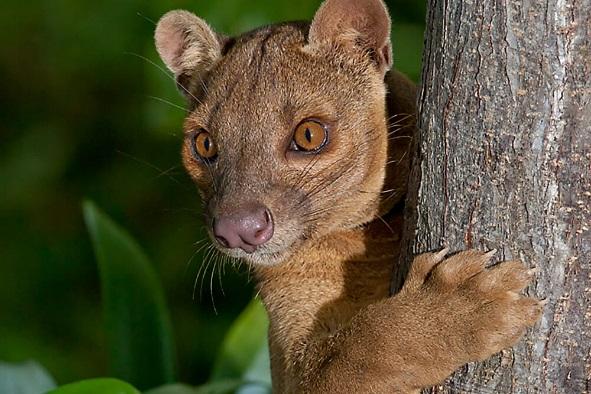
The fossa is the biggest carnivore that is native to Madagascar in South Africa. It is a relative of the mongoose, although its appearance is a little more cat-like. It can grow up to six feet in length and can weigh up to 26 pounds.
The fossa is a skilled predator, feeding on mice, wild pigs, and lemurs. It has retractable claws, a long tail, and sharp teeth that allow it to pierce its prey’s skin easily. Fossas are solitary creatures that move swiftly, which is why scientists have difficulty in studying them on a closer level.
Tokay Gecko
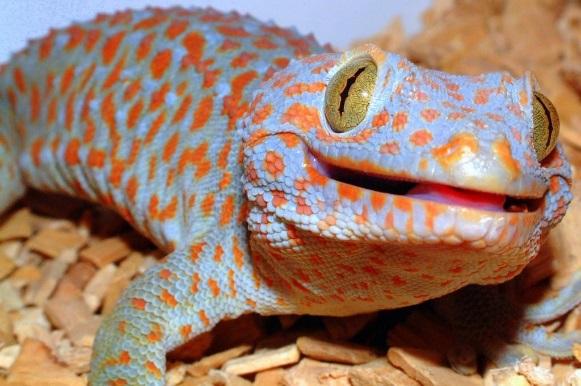
Tokay geckos are among the largest gecko species on the planet. They don a colorful appearance and are commonly found in south and southeast Asia. The tokay gecko gets it name from the noise it makes, which sounds like it’s saying “to-kay.”
While they may seem smiley and adorable, these geckos have a tendency to be territorial, attacking intruders and fellow Tokays who might pose a threat. A tokay can break off its tail in defense, with the cast-off section moving about for several minutes to allow it to distract and escape from its attacker.
Giant Otters
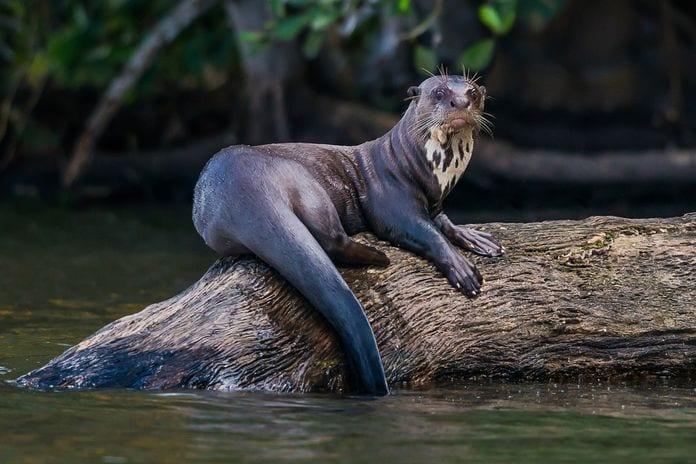
The South American otter is the largest in the world, having a length of about six feet. It is only found in the creeks and rivers of Orinoco, La Plata, and the Amazon. These otters are part of the weasel family, with strong tails and webbed feet that enable them to swim dexterously through the water.
Giant otters usually eat fish, consuming between six and nine pounds of food per day. They can hunt alone or in groups, enacting coordinated attacks in order to reach their food quota for the day. Giant otters are hunted by humans, leading to a decreased population in the wild.
Dogs
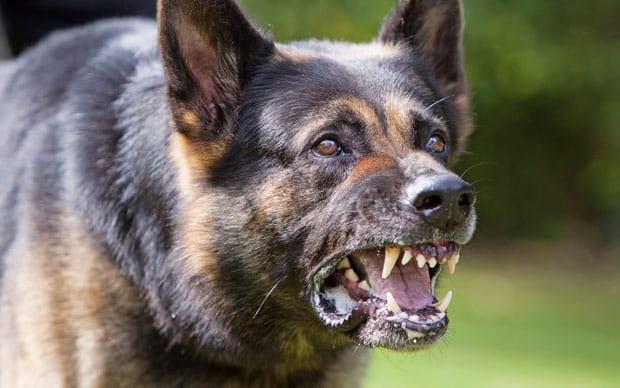
They may be “man’s best friend,” but that doesn’t mean they aren’t dangerous too. Dogs are known to occasionally people, especially when they’ve been mistreated or aren’t used to strangers going near them. Apart from this, they can also carry the deadly rabies virus, transmitting it from other animals (like rats, monkeys, and bats) to humans.
Rabies has been controlled in Western Europe and North America, but other parts of the world aren’t so lucky and still see thousands of deaths each year due to the disease. Rabies is mainly passed on through the bite of an infected animal and leads to a slow and hideously painful death if left untreated.
Deathstalker Scorpions

Scorpions are greatly feared by humans, and with good reason. They are fast movers, incapacitating prey and perceived enemies alike with their powerful venom. One of the most dangerous types of scorpions is the aptly named deathstalker, commonly found in North America and the Middle East.
The deathstalker’s venom contains a mix of neurotoxins. While not fatal to healthy adult humans, this noxious potion is dangerous for younger children and the elderly. The sting is also painful and should be treated as a medical emergency.
Great White Sharks
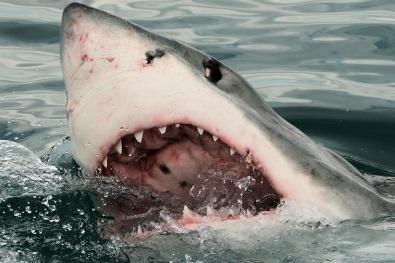
Even if you’re not a fan of shark movies, you’re probably familiar with the great white shark. Considered the biggest predatory fish on the planet, great white sharks are found in almost every ocean on Earth. They can live to more than 70 years old, and most shark attacks worldwide are attributable to the species.
Great whites grow up to 15 feet long on average. They get their name from their size and the pearly color of their underbellies. These sharks are able to propel themselves out of the water like whales, allowing them to capture prey animals, even if they’re not submerged.
Chameleons
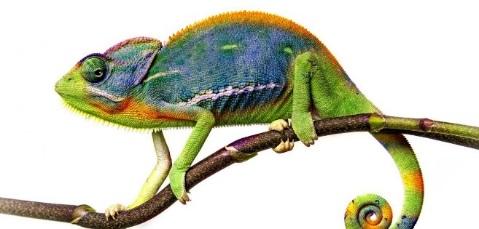
Chameleons are best known for their ability to change color at will, allowing them to camouflage themselves from enemies and attract potential mates. Apart from their color-changing ability, chameleons also have a distinctively long tongue and eyes which can move independently from each other.
Chameleons feed primarily on insects like grasshoppers, crickets, mantids, and locusts. They aren’t able to move around very fast, but their long tongues more than make up for that in speed. A ball of muscle is found at the end of their tongues, forming a small suction cup once it attaches to its prey.

